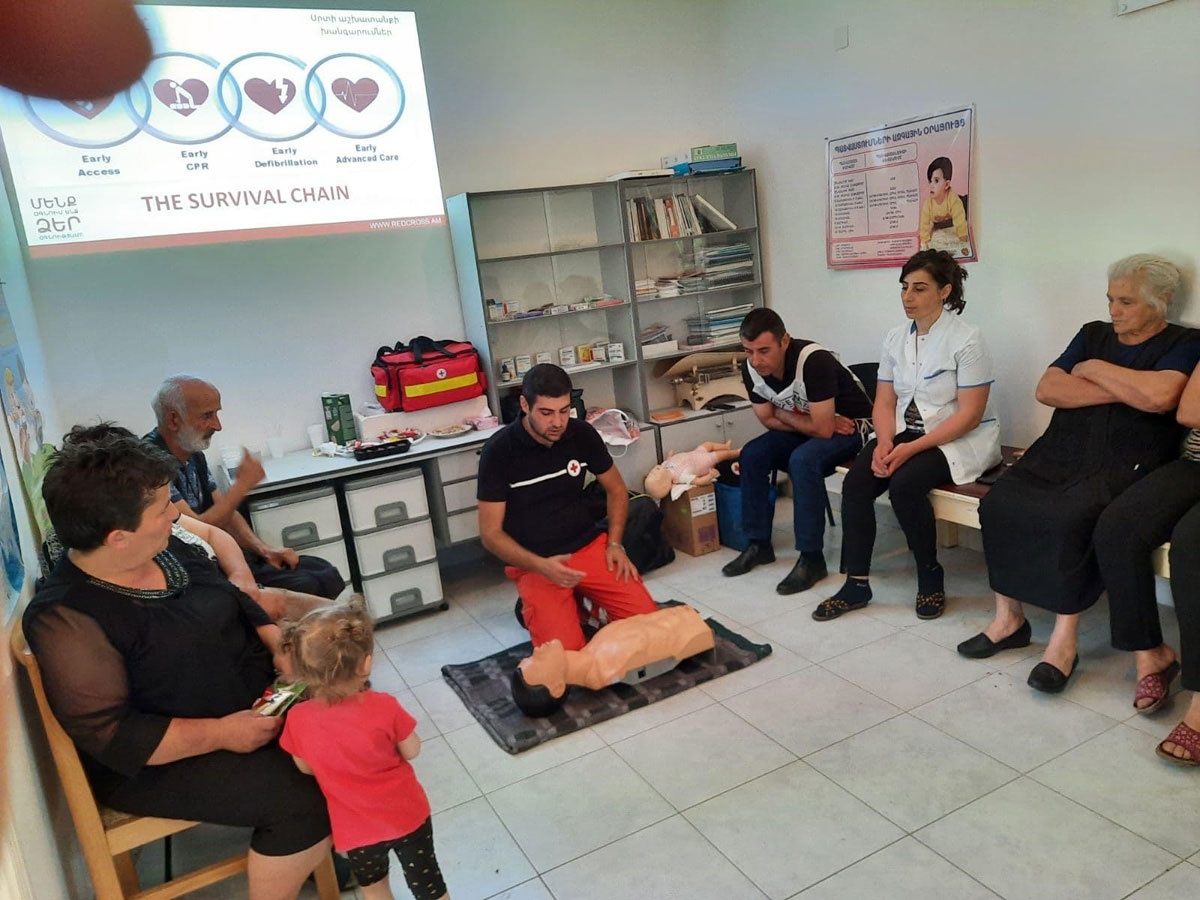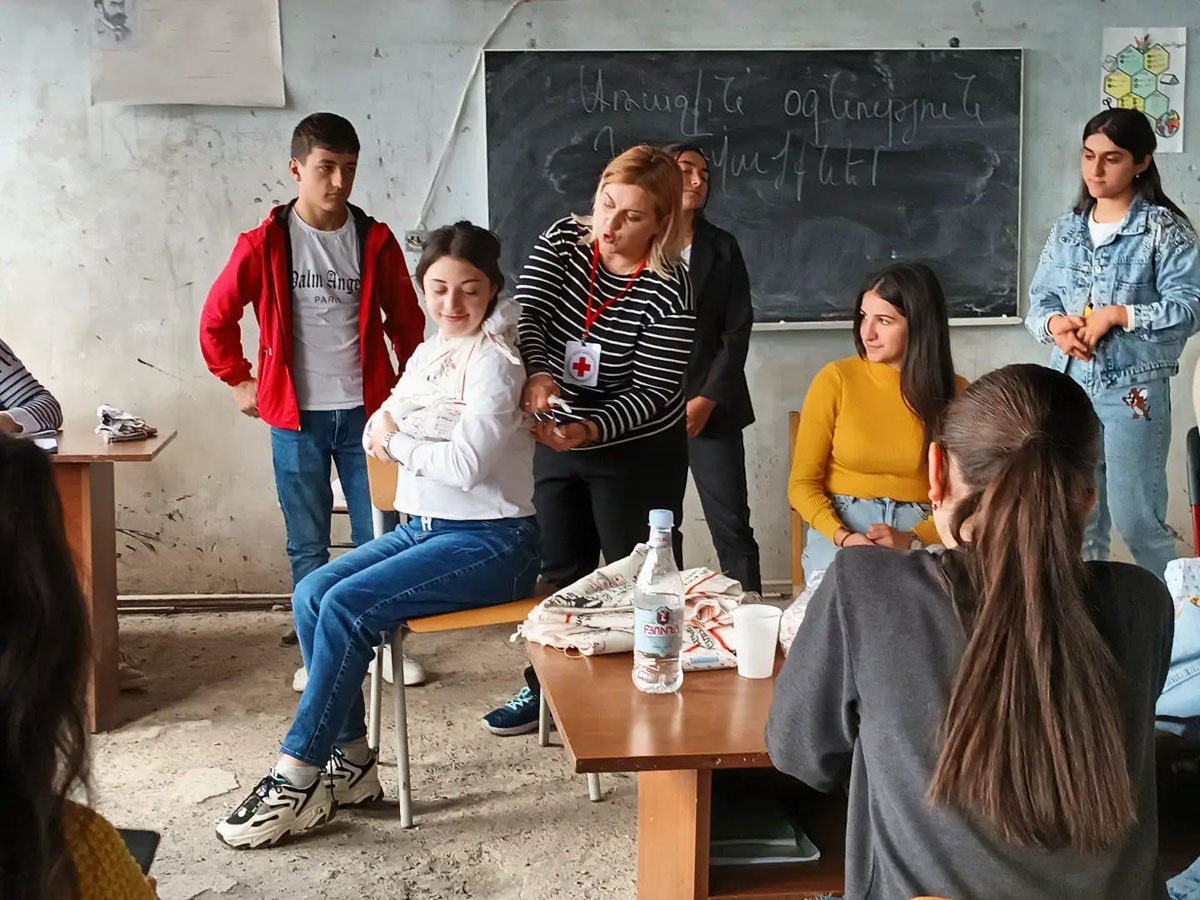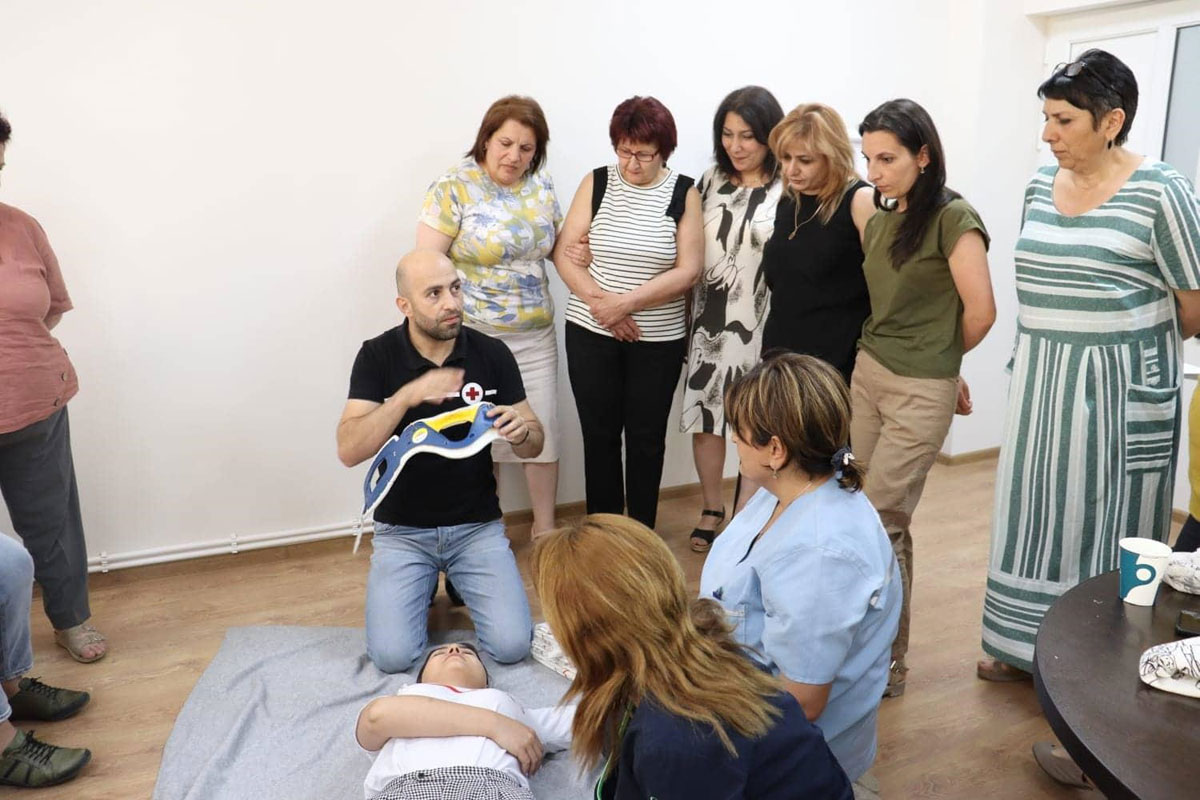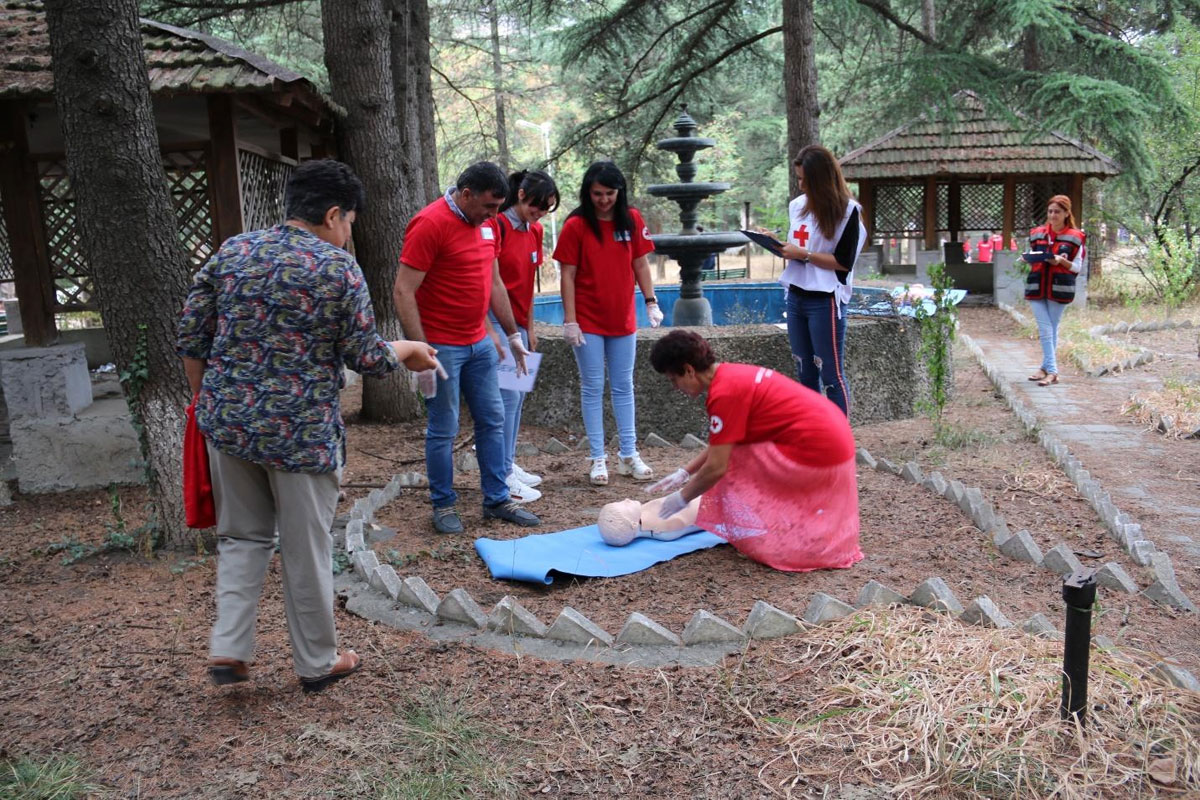Here’s our context
In terms of disaster risk, Armenia is among the most vulnerable countries in the world. As it is land-bound, it is susceptible to all types of disasters except those related to the sea. The number of road traffic accidents in Armenia is high, resulting in around 300 deaths each year. Disasters and emergencies are responsible for a large number of deaths each year. The escalation of these in 2020 from conflict was a reminder that tensions could rise at any moment and have humanitarian consequences for communities along the border with Azerbaijan. As a result of their remote location and the conflict, members of the border community are particularly vulnerable. Furthermore, the conflict prevents them from accessing the roads, isolating them even more.
Here’s what we’re doing
The Armenian Red Cross Society (ARCS) identified border communities as potentially benefiting from improved access to timely first aid and safe transportation by skilled first providers. With the support of the ICRC, in all the five border regions – Tavush, Gegharkunik, Syunik, Vayots Dzor and Ararat, we launched a project for a first aid training unit led by skilled first aid instructors.
The target audience included community members, teachers, local medical staff (nurses), community leaders/administration workers, private vehicle owners and school children. The training sessions were conducted in around 80 communities, and 2000 people participated (Figures 1, 2, 3).
The target group undertakes Basic First Aid training, with a focus on safe transportation. They are provided with first aid materials/kits and the contacts of the relevant referral medical facilities. Participants are trained through face-to-face interaction and focused discussions, along with other methods depending on their characteristics, age groups, and special needs. The training program is developed by the ARCS First Aid Methodological Training Center in accordance with the IFRC International First Aid, Resuscitation and Education Guidelines. Sessions and scenarios of simulation exercises for different community groups are designed by the trainers, taking into consideration the local circumstances, needs and interests of the learners.
This approach also aims to establish, sustain and strengthen the volunteer network in the regions. The learners’ needs and context-related hazards when providing care (e.g. mine awareness, safe behavior, overcoming stress, psychological first aid) are focus areas for the learners. The first aid providers raise awareness, educate and mobilize the community with regard to preventing and responding to emergencies.
Here’s what happened
Our main objective was to have border communities that are aware, trained, and prepared. In all target regions, we recruited and equipped first aid community response teams. The team members reside in the communities, and if necessary, they can provide first aid to casualties and patients and will safely transport them to the referral medical center.
As a result, the community members have enhanced their skills and are able to provide coordinated action through simulation exercises.
The project has also resulted in an increased number of community volunteers of the Armenian Red Cross Society. Further, the community response teams have become actively engaged in the life of the community and organize first aid service provision during different mass events, such as cultural and sports (Figure 4).
This project drew us one step closer to our vision – to have “A safe and secure country, where everyone is confident to receive and provide quality first aid”.
Questions for readers
How should we measure the outcomes of this project for example the coordinated action through simulation?
What can be added to increase the impact of the project?
What can be done to improve the sustainability of the project? How do we build community ownership?
Competing Interests
The author has no competing interests to declare.
Publisher’s Note
This article was originally published displaying the submission date as 01 June 2022 and the acceptance date as 24 February 2023. This metadata was incorrect due to the article being added to the OJS3 system after a migration to a new publisher when it had already been through the review process. As of 05 October 2023, the data has been corrected to display the correct submission and acceptance dates.




